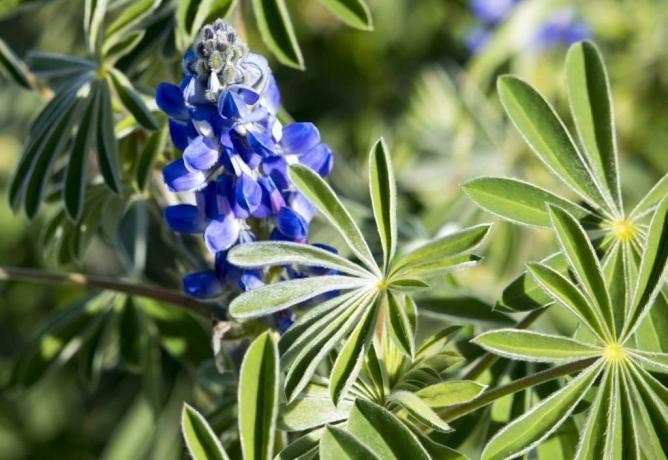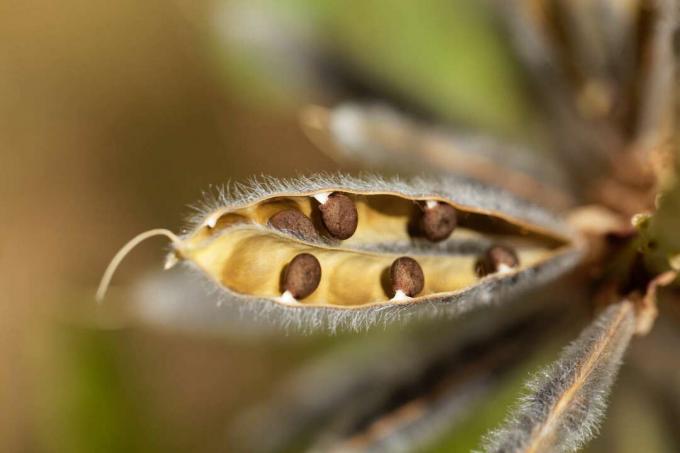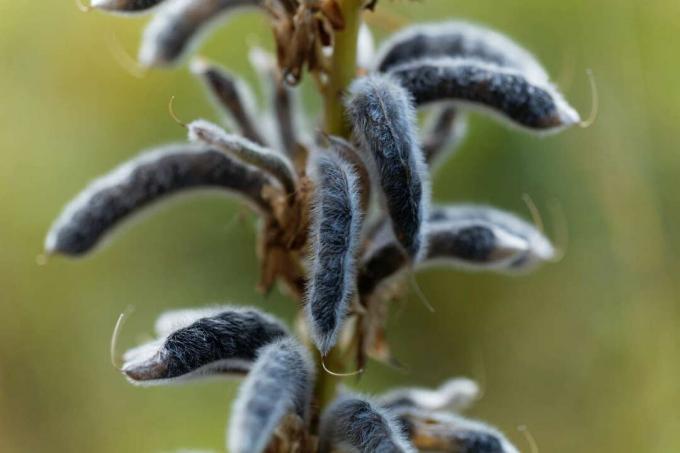Lupine seeds are healthy and delicious. But be careful! Not all lupins are safe to eat - many are even poisonous.

lupins (lupinus) are now regarded as the regional, vegetable protein source par excellence. Because in contrast to soy, lupins also grow here. This is why more and more products made from lupines can be found on the shelves of many health food stores. But that doesn't mean that every lupine seed is safe to eat. The original species are all poisonous.
contents
- Lupine Seeds: Protein-rich super seeds
- Poisonous wild lupine
- Non-toxic sweet lupine: Breeding makes the difference
Lupine Seeds: Protein-rich super seeds
Lupins are packed with valuable vegetable protein. With around 40% they are the Soybean in no way inferior - in contrast to soy, they can also be grown regionally. The protein-rich seeds are now processed into a wide range of products that make the hearts of lovers of healthy and regional nutrition beat faster. Here you will find a selection of
lupine products, which will convince you of the diversity of these super seeds.
Poisonous wild lupine
Originally, the seeds and to a small extent also the leaves of the lupine contain poisonous alkaloids, lupinine and sparteine. These bitter substances have a toxic effect on humans. Fortunately, the seeds are usually spat out by children because of their bitter taste, which is why only very slight poisoning occurs here. On the other hand, animals are much more frequently affected by poisoning. Large animals such as cows, horses, goats and pigs are at risk, but so are cats, dogs, rodents and birds. The alkaloids, on the other hand, are tolerated by wild animals. Cooking the lupine seeds also makes them inedible. The seeds must first be placed in salt water for at least 14 days before the bitter substances are washed out.
Poisonous wild lupins: symptoms of poisoning
The following symptoms of poisoning must be expected from the consumption of about one untreated pod:
- tachycardia
- motor disorders
- dry mouth
- dizziness
- confusion
- nausea

In severe cases, cardiac arrest and respiratory paralysis can result. Typical symptoms of poisoning also occur in animals, such as:
- shortness of breath
- Stomach and intestinal problems
- salivation
- restlessness
- Tremble
If calves and cows are fed lupins, this can lead to skeletal deformities.
Poisonous Wild Lupins: First Aid for Poisoning
After consumption, it is important to drink plenty of fluids in the form of water. This is how the toxins are diluted. It is also advisable to consult a doctor. This prescribes detoxification and charcoal for weaker poisoning. Parents of small children in particular should always have charcoal tablets in the household pharmacy, because every moment counts in the event of poisoning. In the event of severe symptoms of poisoning, an ambulance must be called immediately. Animals showing symptoms of poisoning are taken to the vet. Even if you're not happy about vet bills, you shouldn't think twice about whether the visit is really necessary. After all, this is a family member.

Non-toxic sweet lupine: Breeding makes the difference
The lupine products that are commercially available are based on the seeds of so-called sweet lupins. They were bred in the 1930's and unlike wild or garden lupins are little to no toxic as the toxic alkaloids have been bred out. This significantly reduces the time it takes to prepare the seeds. In addition, the lupins can be used directly as animal feed and thus offer an alternative to the imported soy.
Things to know about harvesting and using lupine seeds Find out in our special article.
